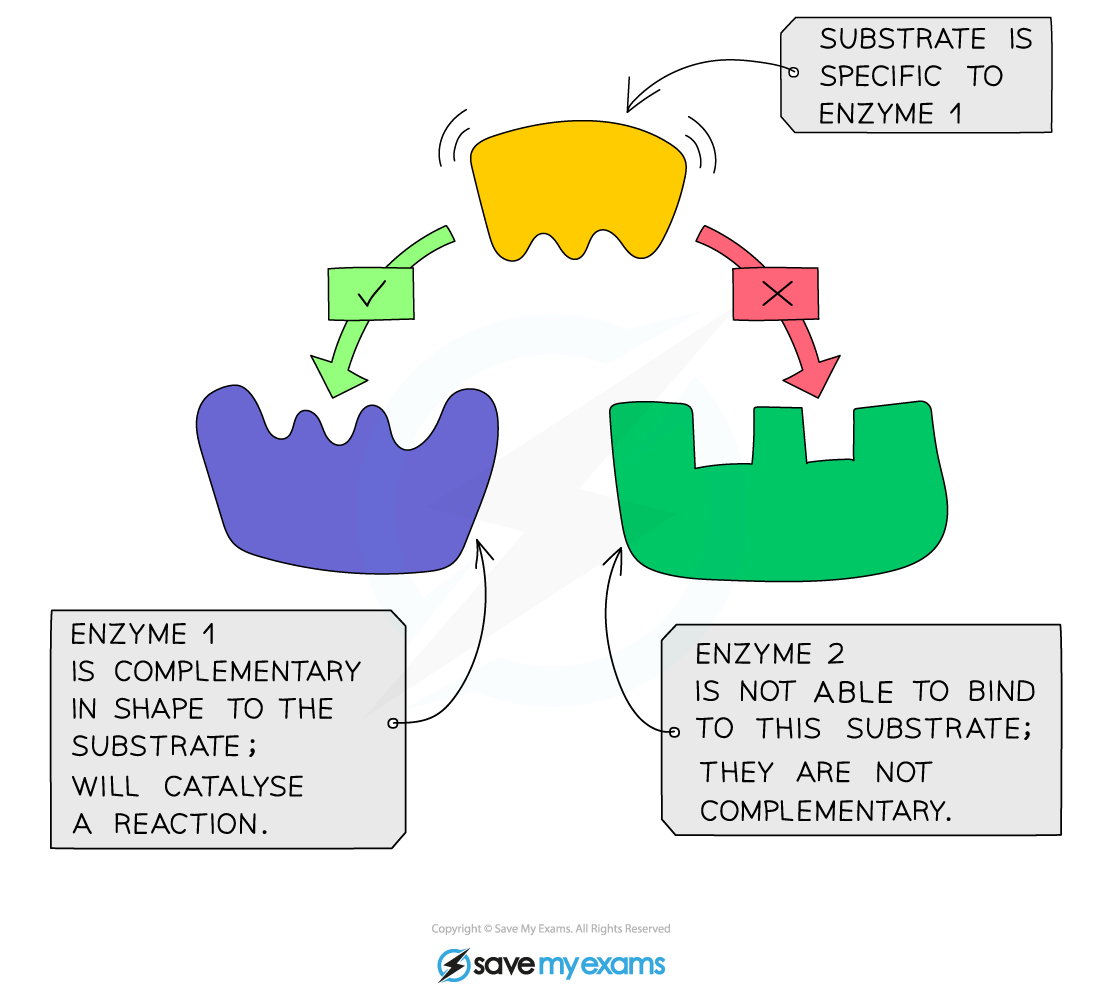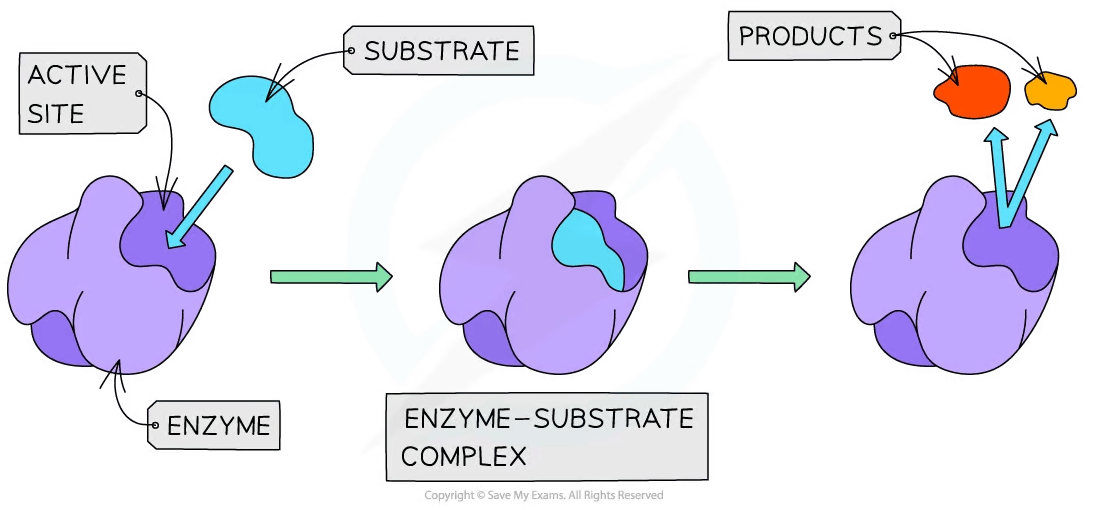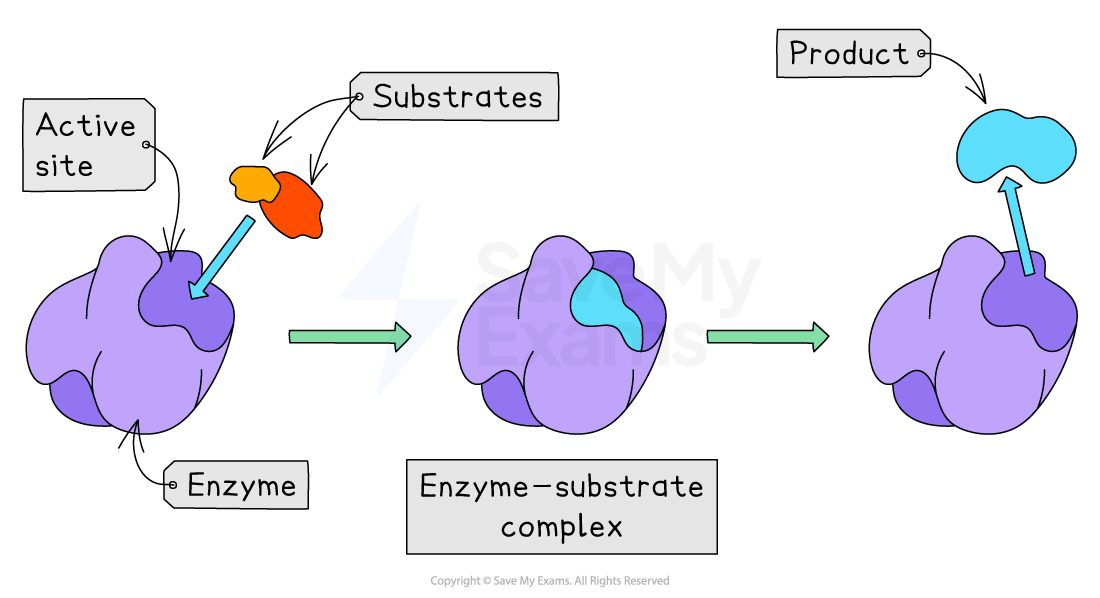Enzyme Structure & Function (SQA National 5 Biology): Revision Note
Exam code: X807 75
Enzyme structure
Enzymes are proteins made by all living cells; they can be described as:
biological catalysts that speed up the rate of cellular reactions without being changed or used up
Enzymes maintain the speeds of all metabolic reactions at a rate that can sustain life
Enzymes lower the energy needed for reactions to begin, so allowing them to occur at a higher rate
If we did not produce digestive enzymes, it would take around 2 - 3 weeks to digest one meal; with enzymes it takes around 4 hours
Enzymes are specific to one particular substrate
This is because of the shape of the active site; the region of the enzyme that binds to the substrate
The active site of an enzyme molecule is complementary to its specific substrate

Enzyme function
During a chemical reaction, enzymes convert substrate molecules into products
This occurs during, e.g.:
degradation reactions
synthesis reactions
As part of a reaction, an enzyme-substrate complex forms temporarily, which facilitates the reaction
Degradation reactions
Degradation reactions break large, complex molecules down into smaller, simpler molecules
A large substrate molecule is broken down into smaller product molecules
Examples include:
the breakdown of protein into amino acids by protease enzymes
the breakdown of starch into glucose by carbohydrase enzymes

Synthesis reactions
During synthesis reactions, smaller molecules are joined together to make larger, more complex molecules
Multiple substrate molecules are joined to give a single product molecule
Enzymes help by holding the molecules in place so they can bond
Examples include:
joining of DNA bases to build a DNA strand
joining amino acids during protein synthesis


Unlock more, it's free!
Did this page help you?